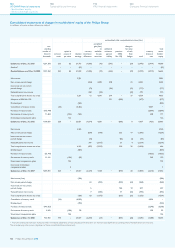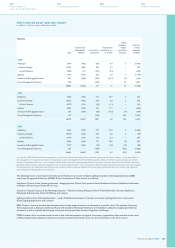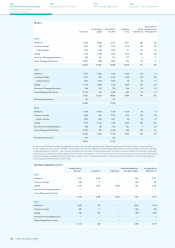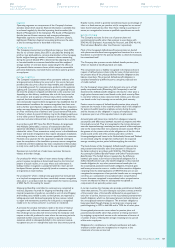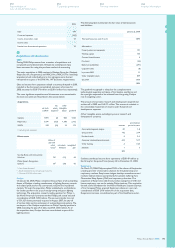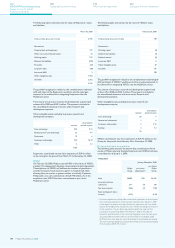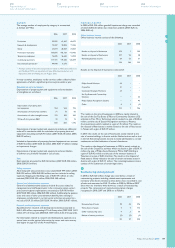Philips 2008 Annual Report Download - page 141
Download and view the complete annual report
Please find page 141 of the 2008 Philips annual report below. You can navigate through the pages in the report by either clicking on the pages listed below, or by using the keyword search tool below to find specific information within the annual report.
Guarantees
The Company complies with FASB Interpretation No. 45, ‘Guarantor’s
Accounting and Disclosure Requirements for Guarantees, including
Indirect Guarantees of Indebtedness of Others’. In accordance with this
interpretation, the Company recognizes a liability at the fair value of
the obligation incurred for guarantees within the scope of the recognition
criteria of the Interpretation, including minimum revenue guarantees.
Accounting standards adopted in 2008
FASB issued the following pronouncements which are applicable
to the Company in 2008:
SFAS No. 157 ‘Fair Value Measurements’
Effective January 1, 2008, the Company adopted SFAS No. 157, ‘Fair
Value Measurements,’ for all financial instruments and non-financial
instruments accounted for at fair value on a recurring basis. SFAS 157
establishes a single definition of fair value and a framework for
measuring fair value, sets out a fair value hierarchy to be used to
classify the source of information used in fair value measurement
and expands disclosures about fair value measurements required
under other accounting pronouncements. It does not change existing
guidance as to whether or not an instrument is carried at fair value.
SFAS 157 established market and observable inputs as the preferred
source of values, followed by assumptions based on hypothetical
transaction in the absence of market inputs.
The valuation techniques required by SFAS 157 are based upon
observable and unobservable inputs. Observable inputs reflect market
data obtained from independent sources, while unobservable inputs
reflect the Company’s market assumptions. These two types of inputs
create the following fair value hierarchy:
Level 1 - Quoted prices in active markets for identical asset
•
or liabilities.
Level 2 - Observable inputs other than quoted prices included
•
in Level 1, such as quoted prices for similar assets and liabilities
in active markets; quoted prices for identical or similar assets and
liabilities in markets that are not active; or other inputs that are
observable or can be corroborated by observable market data.
Level 3 - Unobservable inputs that are supported by little or no
•
market activity and that are significant to the fair value of the
assets or liabilities. This includes certain pricing models, discounted
cash flow methodologies and similar techniques that use significant
unobservable inputs.
In February 2008, the FASB issued FASB Staff Position No. FAS 157-1
(FSP FAS 157-1), which excludes SFAS No. 13, “Accounting for Leases”
and certain other accounting pronouncements that address fair value
measurements, from the scope of SFAS 157. In February 2008, the
FASB issued FASB Staff Position No. 157-2 (FSP 157-2), which provides
a one-year delayed application of SFAS 157 for non-financial assets
and liabilities, except for items that are recognized or disclosed at fair
value in the financial statements on a recurring basis (at least annually).
SFAS 157, as amended by FSP FAS 157-1 and FSP FAS 157-2, is
required to be adopted on January 1, 2009.
In October 2008, the FASB issued FASB Staff Position No. FAS 157-3,
“Determining the Fair Value of a Financial Asset in a Market That Is
Not Active” (FSP 157-3), which clarifies the application of SFAS 157
when the market for a financial asset is inactive. Specifically, FSP 157-3
clarifies how (1) management’s internal assumptions should be
considered in measuring fair value when observable data are not
present, (2) observable market information from an inactive market
should be taken into account, and (3) the use of broker quotes or
pricing services should be considered in assessing the relevance of
observable and unobservable data to measure fair value. The guidance
in FSP 157-3 became effective immediately and was applied by the
Company upon its adoption of SFAS 157 on January 1, 2008.
Standards after 2008
Philips has decided to move to International Financial Reporting
Standards as its sole accounting standard from January 1, 2009 onwards.
The use of US GAAP will be discontinued as from the same date.
Philips Annual Report 2008 141
254
Corporate governance
250
Reconciliation of
non-US GAAP information
262
Ten-year overview
266
Investor information



